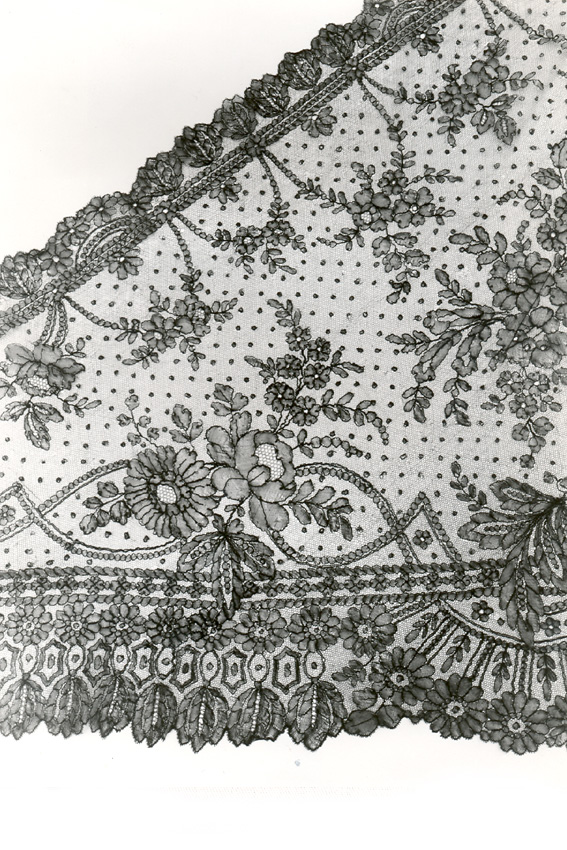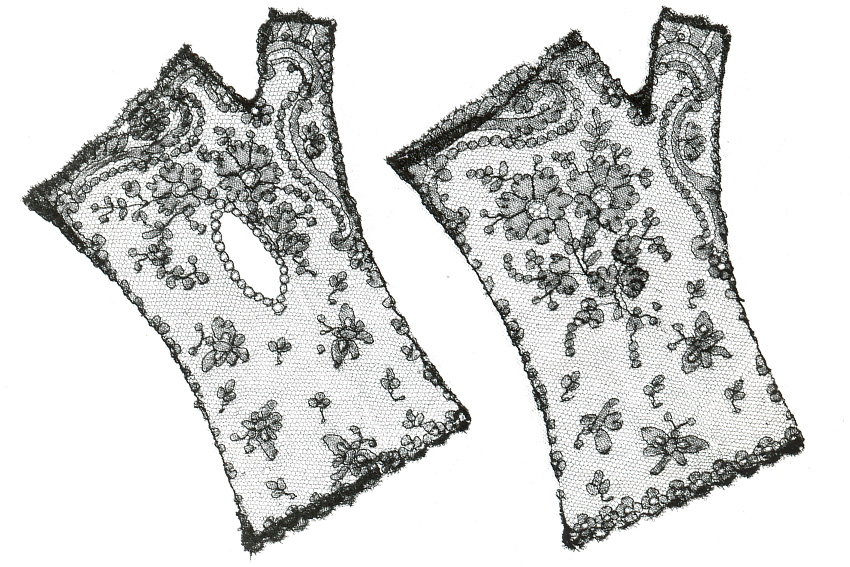Chantilly lace on:
[Wikipedia]
[Google]
[Amazon]


 Chantilly lace is a handmade bobbin lace named after the city of
Chantilly lace is a handmade bobbin lace named after the city of
Chantilly lace – Virtual Museum of Textile Arts
{{Lace types Bobbin lace History of clothing (Western fashion) Textile arts of France


 Chantilly lace is a handmade bobbin lace named after the city of
Chantilly lace is a handmade bobbin lace named after the city of Chantilly
Chantilly may refer to:
Places
France
*Chantilly, Oise, a city located in the Oise department
**US Chantilly, a football club
*Château de Chantilly, a historic château located in the town of Chantilly
United States
* Chantilly, Missou ...
,"Chantilly" ''The Oxford English Dictionary''. 2nd ed. 1989. France
France (), officially the French Republic ( ), is a country primarily located in Western Europe. It also comprises of overseas regions and territories in the Americas and the Atlantic, Pacific and Indian Oceans. Its metropolitan area ...
, in a tradition dating from the 17th century. The famous silk laces were introduced in the 18th century. ''Chantilly lace'', was also produced in the 19th century but this one was actually made not in Chantilly area but in the French Norman town Bayeux and in Geraardsbergen
Geraardsbergen (; french: Grammont, ) is a city and municipality located in the Denderstreek and in the Flemish Ardennes, the hilly southern part of the Belgian province of East Flanders. The municipality comprises the city of Geraardsbergen prop ...
, now in Belgium.
Chantilly lace is known for its fine ground, outlined pattern, and abundant detail. The pattern is outlined in ''cordonnet'', a flat untwisted strand. The best Chantilly laces were made of silk, and were generally black, which made them suitable for mourning wear. White Chantilly lace was also made, both in linen and silk, though most Chantilly laces were made of silk. The black silk Chantilly lace became especially popular, and there was a large market for it in Spain and the Americas. Chantilly and the Spanish laces (such as blonde lace
Blonde lace is a continuous bobbin lace from France that is made of silk. The term ''blonde'' refers to the natural color of the silk thread. Originally this lace was made with the natural-colored silk, and later in black. Most blonde lace was als ...
) were the most popular black laces. Little white Chantilly was ever made. Another notable thing about Chantilly lace is the use of a half-and-whole stitch as a fill to achieve the effect of light and shadow in the pattern, which was generally of flowers. The background, or ''réseau'', was in the form of a six pointed star, and was made of the same thread as the pattern, unlike the otherwise similar blonde lace. The lace was produced in strips approximately four inches wide, and then joined with a stitch that left no visible seam.
Chantilly lace remained popular in 19th century Europe, when many fashionable women wore black or white Chantilly shawls made in Brussels
Brussels (french: Bruxelles or ; nl, Brussel ), officially the Brussels-Capital Region (All text and all but one graphic show the English name as Brussels-Capital Region.) (french: link=no, Région de Bruxelles-Capitale; nl, link=no, Bruss ...
or Ghent
Ghent ( nl, Gent ; french: Gand ; traditional English: Gaunt) is a city and a municipality in the Flemish Region of Belgium. It is the capital and largest city of the East Flanders province, and the third largest in the country, exceeded i ...
.
History
In the 17th century, the Duchesse de Longueville organised the manufacture of lace at Chantilly. It has been produced from then until the present day. It became popular because of the duchesse's patronage and Chantilly's proximity to Paris and came into fashion again during the reigns ofLouis XV
Louis XV (15 February 1710 – 10 May 1774), known as Louis the Beloved (french: le Bien-Aimé), was King of France from 1 September 1715 until his death in 1774. He succeeded his great-grandfather Louis XIV at the age of five. Until he reached ...
and Louis XVI
Louis XVI (''Louis-Auguste''; ; 23 August 175421 January 1793) was the last King of France before the fall of the monarchy during the French Revolution. He was referred to as ''Citizen Louis Capet'' during the four months just before he was ...
; it was a special favorite of Louis XV
Louis XV (15 February 1710 – 10 May 1774), known as Louis the Beloved (french: le Bien-Aimé), was King of France from 1 September 1715 until his death in 1774. He succeeded his great-grandfather Louis XIV at the age of five. Until he reached ...
's last mistress, Mme du Barry, and of Marie Antoinette. When the French Revolution
The French Revolution ( ) was a period of radical political and societal change in France that began with the Estates General of 1789 and ended with the formation of the French Consulate in coup of 18 Brumaire, November 1799. Many of its ...
began in 1789, demand for the lace ceased. The lace-makers were seen as protégés of the royals, and after Mme du Barry and Marie Antoinette were guillotine
A guillotine is an apparatus designed for efficiently carrying out executions by beheading. The device consists of a tall, upright frame with a weighted and angled blade suspended at the top. The condemned person is secured with stocks at t ...
d in 1793, the lace-makers of Chantilly were themselves killed. At this point production ceased.
Napoleon I
Napoleon Bonaparte ; it, Napoleone Bonaparte, ; co, Napulione Buonaparte. (born Napoleone Buonaparte; 15 August 1769 – 5 May 1821), later known by his regnal name Napoleon I, was a French military commander and political leader who ...
sponsored a revival of Chantilly lace between the years 1804 and 1815. At this point production was concentrated in Normandy, mainly around the Bayeux area. While it was no longer being made in Chantilly, all of the old techniques and designs were used. Chantilly lace reached the height of its popularity around 1830 and was revived again in the 1860s, at which point it was made at Bayeux as well as at Geraardsbergen
Geraardsbergen (; french: Grammont, ) is a city and municipality located in the Denderstreek and in the Flemish Ardennes, the hilly southern part of the Belgian province of East Flanders. The municipality comprises the city of Geraardsbergen prop ...
, in what is nowadays Belgium.
In 1844, a machine was patented that made Valenciennes lace and black silk Chantilly lace that was difficult to distinguish from the handmade lace.
References
External links
Chantilly lace – Virtual Museum of Textile Arts
{{Lace types Bobbin lace History of clothing (Western fashion) Textile arts of France